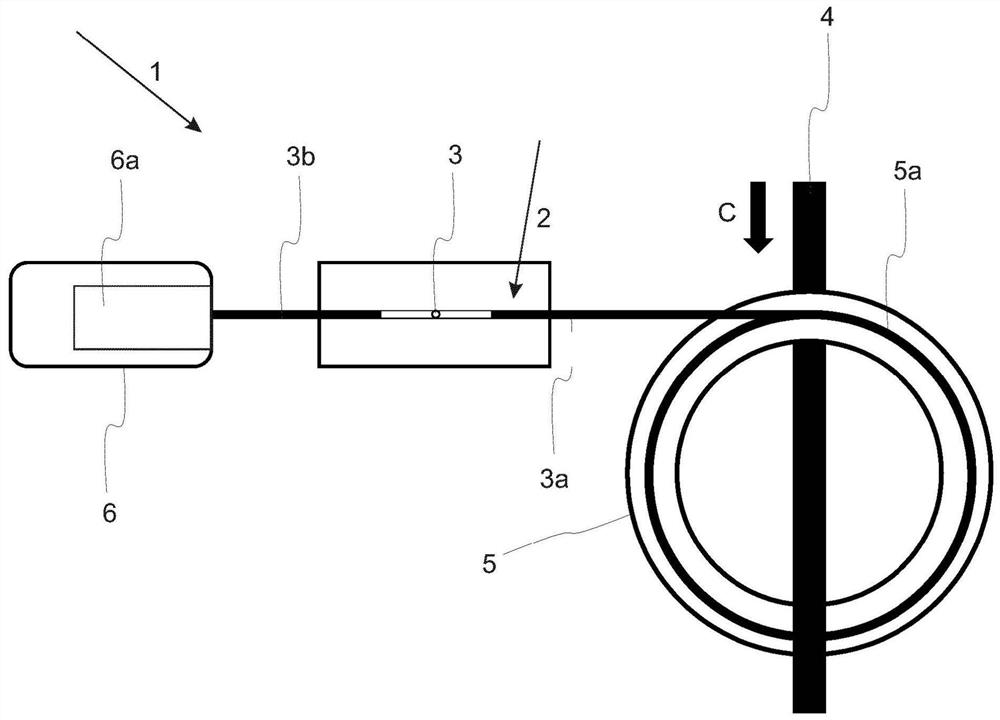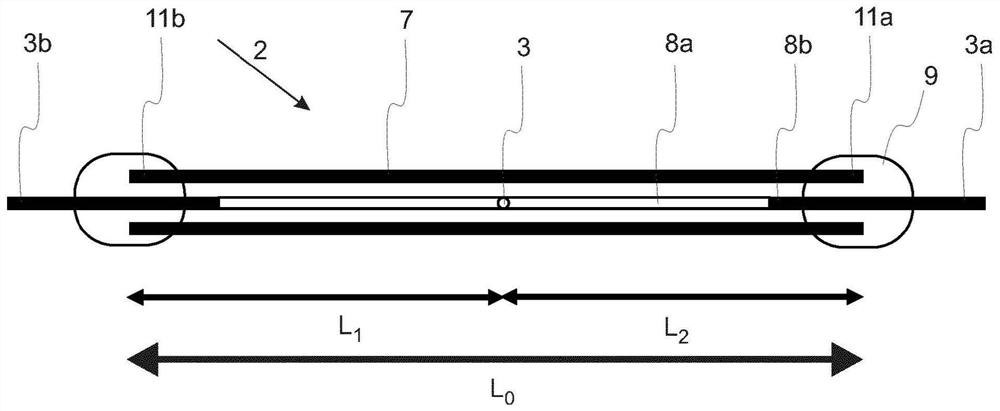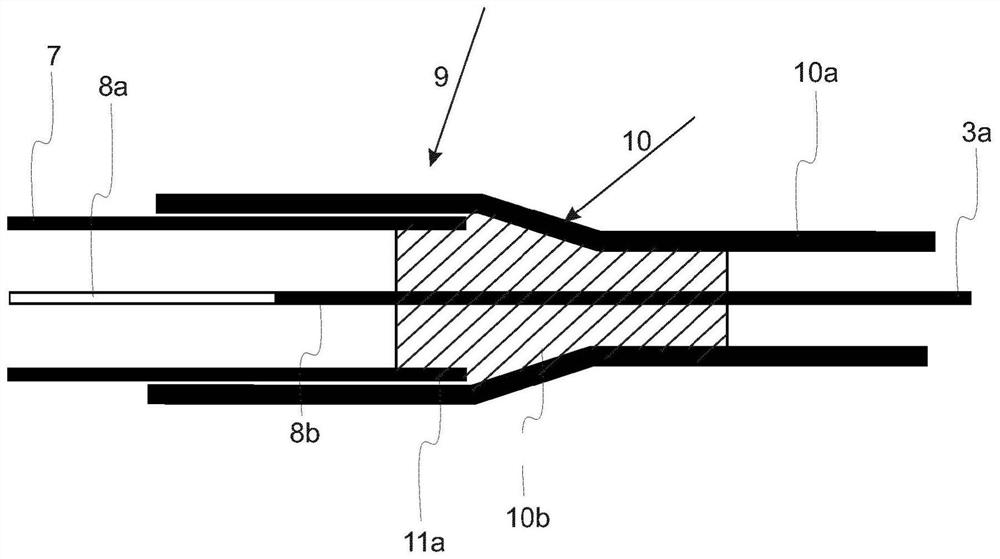A spliced optical fiber with splice protection, current sensor with such spliced optical fiber and method for protecting a spliced optical fiber
A polarization-maintaining optical fiber and optical fiber technology, applied in polarization optical fiber, cladding optical fiber, and current-only measurement, etc., can solve problems such as short shelf life, and achieve the effect of accurate PER change and simplified protection process.
- Summary
- Abstract
- Description
- Claims
- Application Information
AI Technical Summary
Problems solved by technology
Method used
Image
Examples
Embodiment Construction
[0060] The term "spliced optical fiber" refers to an optical fiber obtained by splicing two optical fibers using a splicing method. For reasons of simplification, spliced fiber is considered a general term and may thus include the protective structure according to the invention, but may also refer only to the fact that splicing has been performed, depending on the context. In particular, this term should also emphasize that, for the purposes of the present invention, it is immaterial whether or not the spliced sections of spliced optical fibers have been treated in any way before applying the splice protection according to the present invention.
[0061] The term "polarization extinction ratio", PER, refers to the conventional definition as the ratio of the light intensity of an undesired polarization state in a polarization maintaining fiber to the light intensity of a desired polarization state in a polarization maintaining fiber; that is, the smaller the polarization...
PUM
| Property | Measurement | Unit |
|---|---|---|
| Diameter | aaaaa | aaaaa |
Abstract
Description
Claims
Application Information
 Login to View More
Login to View More - R&D
- Intellectual Property
- Life Sciences
- Materials
- Tech Scout
- Unparalleled Data Quality
- Higher Quality Content
- 60% Fewer Hallucinations
Browse by: Latest US Patents, China's latest patents, Technical Efficacy Thesaurus, Application Domain, Technology Topic, Popular Technical Reports.
© 2025 PatSnap. All rights reserved.Legal|Privacy policy|Modern Slavery Act Transparency Statement|Sitemap|About US| Contact US: help@patsnap.com



